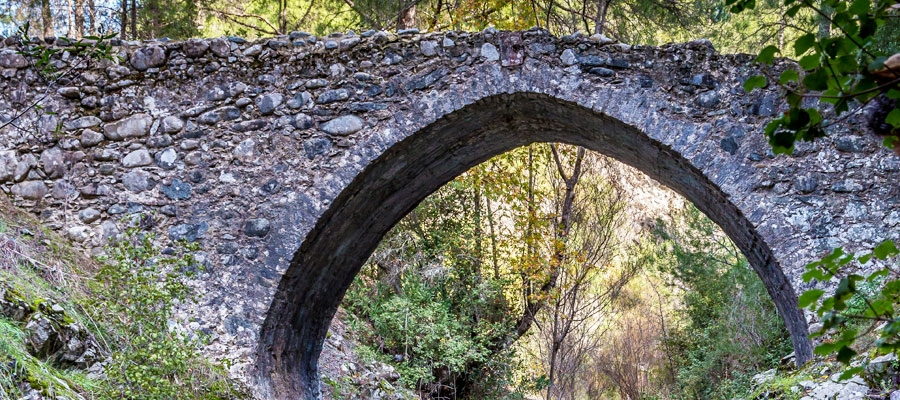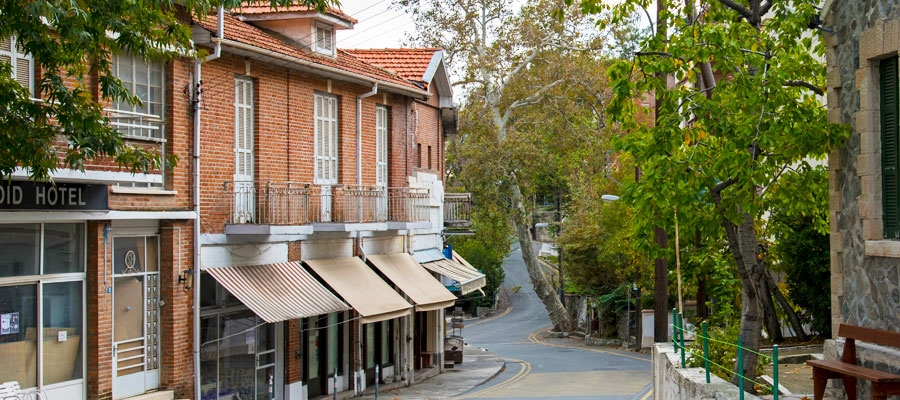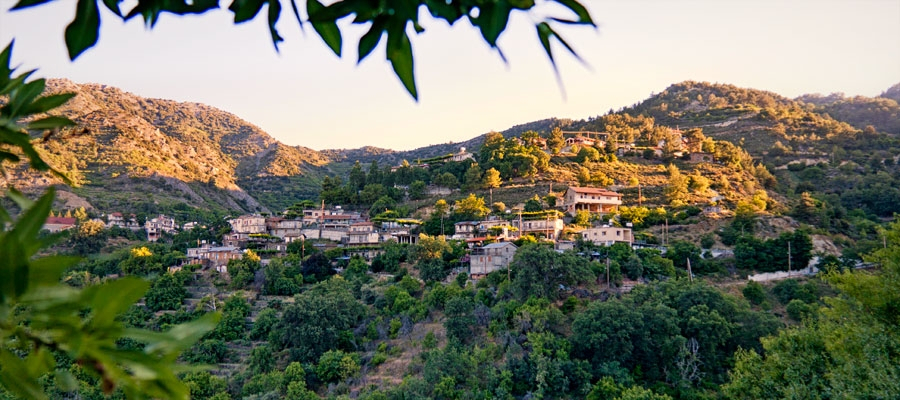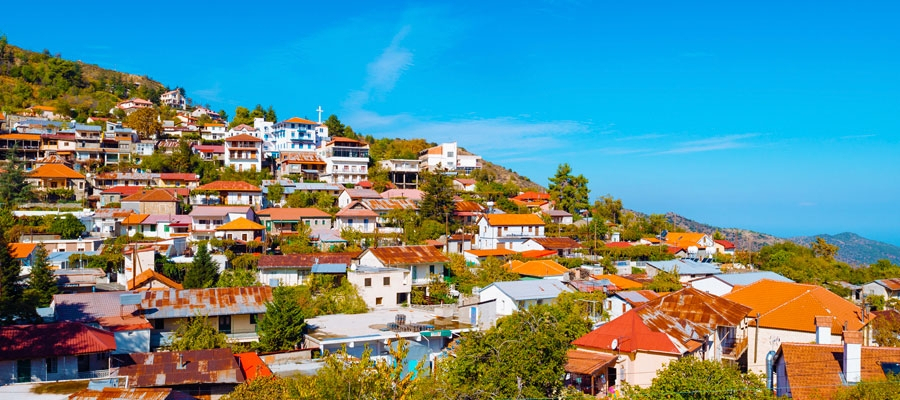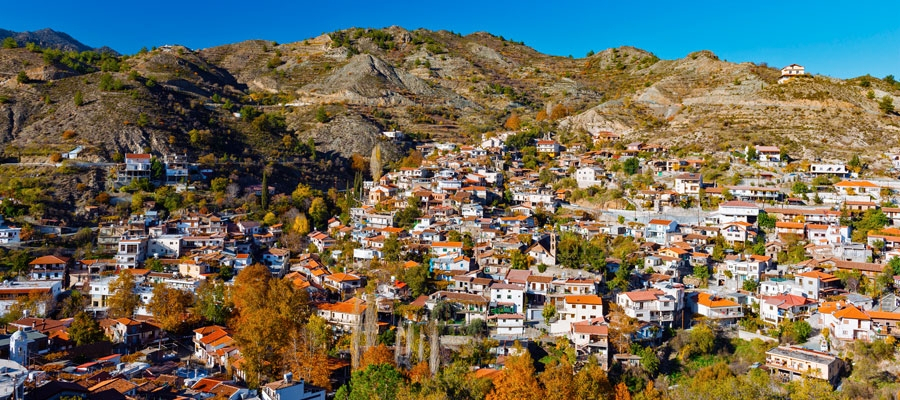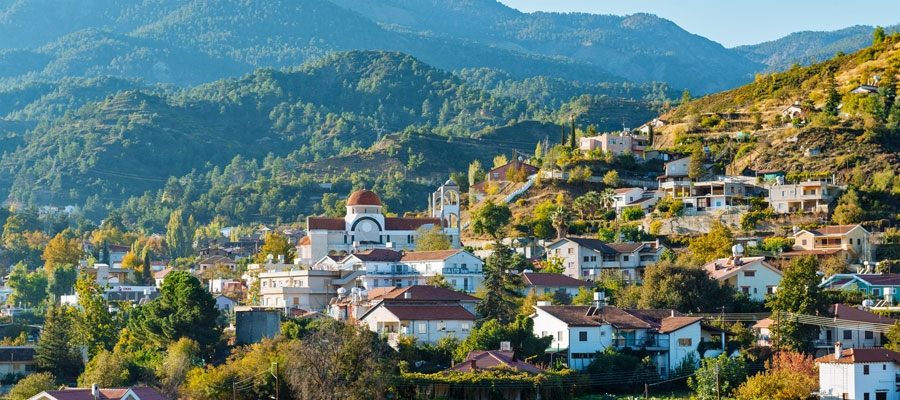Located in the Troodos mountain range, in the Marathasa valley of the Lemesos (Limassol) district, the village of Tries Elies sits at an altitude of 800 metres. It can be reached from Lemesos by following the B8 route, then the F802, followed by the F804, and finally the F811.
The tiny village has existed since Medieval times and was part of the royal estates during the Frankish period. It was also the birthplace of Chrysanthos (1767-1810), Archbishop of Cyprus under Turkish rule.
Its sights include interesting churches such as the small 17th or 18th century wooden-roofed structure of Archangelos Michael, and the small 17th century wooden-roofed church of Agia Paraskevi.
Other places to visit in the area include the Venetian bridges of Mylos and Agios Andronikos, whilst accommodation is available in beautiful, traditional houses.

